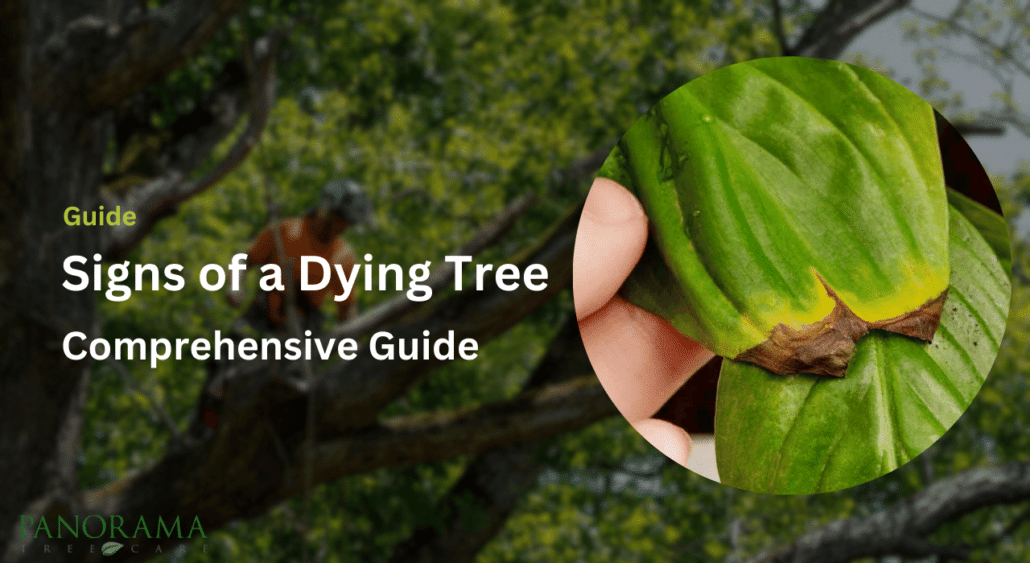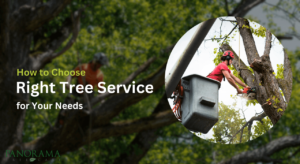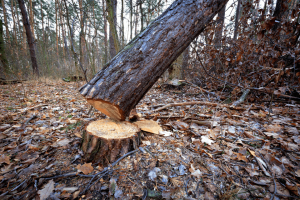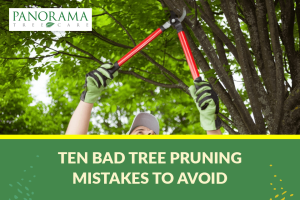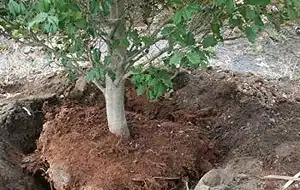Trees are invaluable assets to our landscapes, providing shade, beauty, and countless environmental benefits.
However, like all living organisms, trees can succumb to various stresses, diseases, and pests, leading to their eventual decline.
Recognizing the signs of a dying tree is crucial for taking timely action and preserving the health of your outdoor spaces.
In this comprehensive guide, we’ll explore the telltale indicators that a tree may be in distress, equipping you with the knowledge to identify potential issues and take preventive measures before it’s too late.
The Importance of Recognizing a Dying Tree
Trees play a crucial role in maintaining the balance of our ecosystem, and recognizing when they are in distress is vital for their preservation.
By identifying signs of decline early on, we can take proactive measures to mitigate further damage and potentially save the tree from irreversible harm.
Additionally, addressing tree health issues promptly can prevent safety hazards such as falling branches or toppling trees, which can cause property damage or injury.
Reasons Why Trees May Decline
Diseases
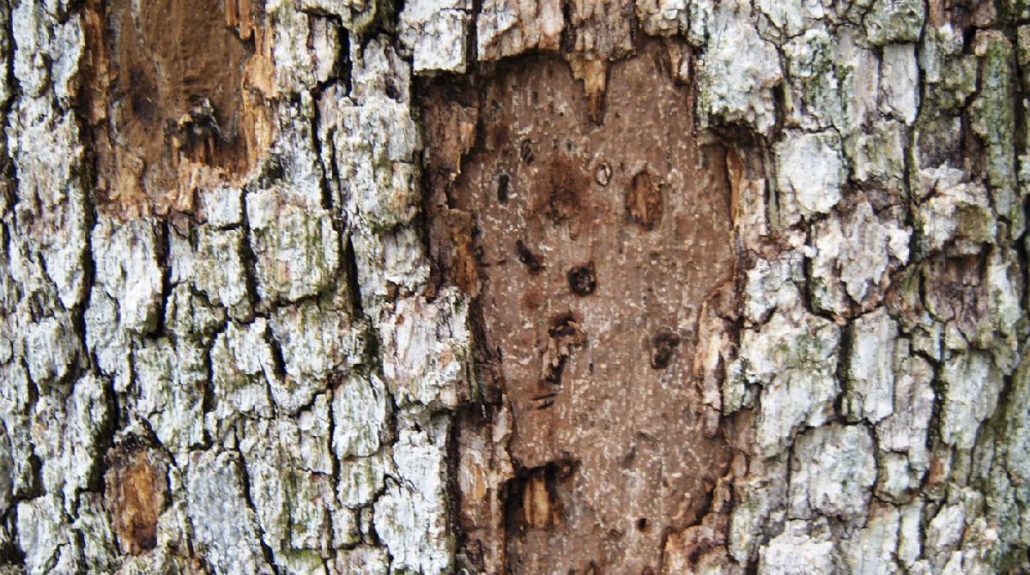
Trees can fall victim to a range of diseases caused by bacteria, fungi, or viruses. These diseases can weaken the tree’s immune system, making it more susceptible to other ailments.
For example, Dutch elm disease, caused by a fungus spread by elm bark beetles, can lead to the rapid decline of elm trees by blocking water transport within the tree, causing wilting and eventual death.
Similarly, oak wilt, another fungal disease, affects oak trees and can lead to the wilting and death of infected trees.
Pests
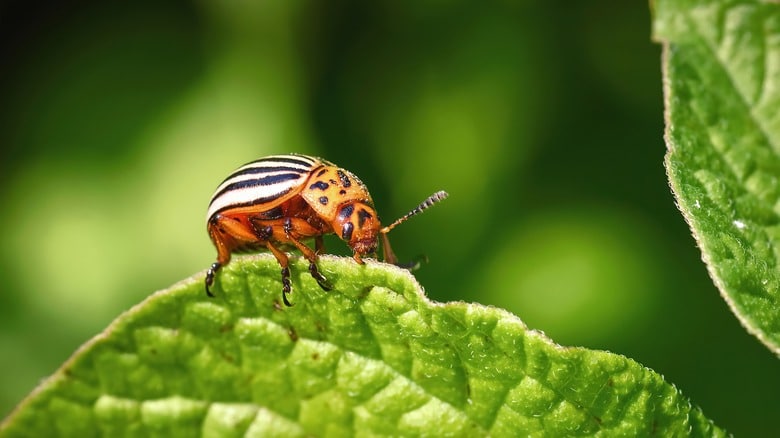
Insect infestations pose a significant threat to tree health. Pests such as emerald ash borers, which burrow into the bark and disrupt nutrient flow, or tent caterpillars, which defoliate trees by feeding on leaves, can cause extensive damage to tree populations.
These pests weaken the tree’s defenses, making it more susceptible to diseases and environmental stressors.
Environmental Stressors
Trees are exposed to various environmental stressors that can negatively impact their health. Drought, for example, can lead to water stress, causing leaves to wilt and die off.
Flooding, on the other hand, can saturate the soil and deprive roots of oxygen, leading to root rot and subsequent decline.
Pollution, including air pollution and soil contamination, can also harm trees by interfering with their ability to absorb nutrients and water.
Overview of Common Signs to Watch For
Yellowing or Browning Leaves
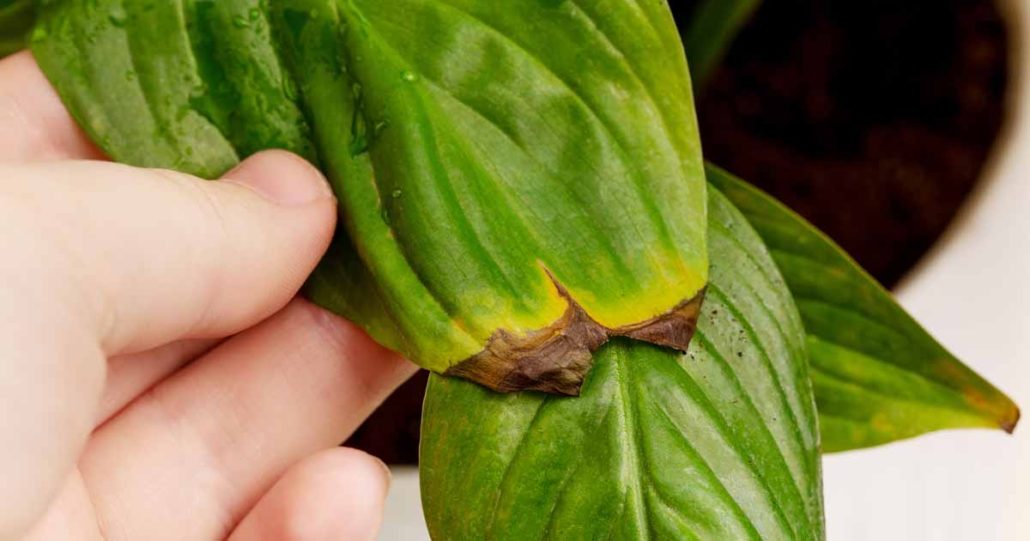
One of the most common indicators of a tree in distress is the discoloration of its leaves. If you notice that the leaves are turning yellow or brown, it could be a sign of several underlying issues.
Nutrient deficiencies, such as a lack of nitrogen or iron, can cause leaves to yellow. Diseases, such as fungal infections or bacterial leaf spot, can also lead to discoloration.
Additionally, water stress, either from too much or too little water, can cause leaves to turn brown and dry up.
Premature Leaf Drop
Another telltale sign of a struggling tree is premature leaf drop. If a tree sheds its leaves earlier than usual, it’s a sign that something is wrong.
This could be due to stress from environmental factors like drought or extreme temperatures, or it could indicate the presence of pests or diseases that are causing the leaves to die off prematurely.
Wilted or Curled Leaves
Leaves that appear wilted or curled are another indication of a tree’s poor health.
Wilted leaves often signal dehydration, which can occur when a tree is not getting enough water or when its roots are damaged.
Pest infestations can also cause leaves to curl as the insects feed on the plant’s tissues. In some cases, diseases can affect the structure of the leaves, causing them to curl or distort.
How These Signs Indicate a Tree’s Health
Vibrant, Green Leaves
Healthy trees typically boast vibrant green foliage. This indicates that the tree is receiving an adequate supply of essential nutrients, such as nitrogen, phosphorus, and potassium, which are crucial for maintaining leaf health and vigor.
Additionally, green leaves suggest that the tree is effectively photosynthesizing, producing sugars and oxygen vital for its growth and survival.
Abnormal Discoloration
When a tree’s leaves display abnormal discoloration, such as yellowing or browning, it often signifies an underlying issue.
Yellowing leaves may indicate a deficiency in essential nutrients like nitrogen or iron. Browning leaves could be a result of various factors, including drought stress, diseases like fungal infections, or pest infestations.
Identifying the specific cause of discoloration is crucial for implementing targeted remedies to restore the tree’s health.
Wilting
Wilting leaves are a clear indication that the tree is experiencing water stress. This could be due to insufficient watering, excessive heat, or damage to the root system.
When a tree lacks access to an adequate water supply, its leaves lose turgidity and droop, signaling the need for immediate attention to prevent further dehydration and potential damage.
Premature Dropping
The premature dropping of leaves can be a distress signal from the tree. It may shed its leaves prematurely as a survival mechanism in response to adverse conditions such as drought, extreme temperatures, or pest infestations.
Additionally, diseases that affect the leaf structure or vascular system can lead to leaf drop.
Monitoring and addressing the underlying cause of premature leaf drop are essential for preserving the tree’s health and vitality.
Bark Damage and Abnormalities
Peeling or Cracking Bark
The bark serves as a protective layer for the tree, shielding it from external threats such as pests, diseases, and environmental stressors.
When the bark becomes damaged, either through physical injury or natural aging processes, it can compromise the tree’s defense mechanisms.
Peeling or cracking bark exposes the vulnerable inner layers of the tree, including the cambium and sapwood, to harmful agents.
Pests such as beetles or borers may exploit these openings to burrow into the tree and cause further damage.
Therefore, observing peeling or cracking bark is a red flag that warrants closer inspection and potential intervention to protect the tree’s health.
Signs of Insect Infestation
Insect infestations can wreak havoc on a tree’s bark, leaving behind telltale signs of their presence.
Exit holes, created by emerging adult insects, are a common indicator of infestation and may be visible on the surface of the bark.
Additionally, frass, which is the excrement produced by feeding insects, may accumulate near infested areas, resembling sawdust or fine powder.
In severe cases, you may even observe the insects themselves, such as beetles or caterpillars, actively feeding on the bark.
Identifying these signs of insect activity is crucial for implementing targeted pest management strategies to mitigate damage and protect the tree’s well-being.
Fungal Growths or Conks
Fungi are opportunistic organisms that thrive in moist, decaying environments, making wounded or compromised trees susceptible to fungal infections.
The presence of fungal growths or conks on the bark is a clear indication of internal decay or rot within the tree.
These growths may manifest as discolored patches, powdery substances, or mushroom-like structures protruding from the bark.
Fungi can penetrate deep into the tree’s tissues, weakening its structural integrity and impairing its ability to transport water and nutrients.
Cankers or Wounds on the Trunk
Branch and Twig Dieback
When a tree exhibits branch and twig dieback, it signifies a significant decline in its health.
This phenomenon involves the gradual death of branches, typically starting from the top and progressing downwards.
Nutrient deficiencies, such as a lack of essential minerals like potassium or magnesium, can weaken the tree’s overall health and make it more susceptible to stressors.
Diseases like canker diseases or fungal infections can also cause branch dieback by disrupting the flow of nutrients and water within the tree.
Sparse Foliage or Lack of New Growth
The presence of sparse foliage or a lack of new growth is another concerning sign indicating potential health issues in a tree.
Healthy trees typically exhibit vigorous growth, with lush foliage covering their branches. However, when a tree experiences stress or decline, it may struggle to produce new leaves and branches.
Environmental stressors such as drought, extreme temperatures, or poor soil conditions can inhibit a tree’s ability to photosynthesize and generate new growth.
Diseases like vascular wilt diseases or root rot can also disrupt the tree’s vascular system, impairing its ability to transport water and nutrients to its foliage.
Brittle or Easily Broken Twigs
Brittle or easily broken twigs are indicative of poor tree health or structural instability. Healthy twigs are flexible and resilient, able to withstand environmental stresses such as wind or snow loads.
However, when a tree is in decline, its twigs may become weak and brittle, making them prone to breakage.
Nutrient deficiencies, particularly of micronutrients like zinc or manganese, can weaken the tree’s structural integrity and make its twigs more susceptible to breakage.
Diseases such as canker diseases or twig blight can cause dieback and decay in the tree’s twigs, further compromising their strength.
Root Issues and Soil Problems
Root Stability
Roots play a crucial role in anchoring trees securely in the soil, providing stability against wind, rain, and other environmental forces.
When roots become exposed or damaged, whether due to erosion, excavation, or soil disturbance, the tree’s stability is compromised.
Exposed roots are more susceptible to physical damage, drying out, and disease, which can weaken the tree’s foundation and increase the risk of toppling over, especially during storms or high winds.
Nutrient Uptake
Roots are responsible for absorbing water and essential nutrients from the soil, which are vital for the tree’s growth and development.
When roots are damaged or exposed, their ability to efficiently uptake water and nutrients is hindered.
This can lead to nutrient deficiencies, dehydration, and overall decline in tree health. Without a healthy root system, the tree may struggle to produce new growth, leading to sparse foliage, stunted development, and increased susceptibility to pests and diseases.
Soil Compaction or Poor Drainage
Impact on Root Growth
Soil compaction occurs when soil particles are pressed tightly together, reducing pore space and restricting root growth.
Poor drainage exacerbates this issue by causing water to accumulate in the soil, creating waterlogged conditions that suffocate roots and deprive them of oxygen.
As a result, the tree’s root system may become shallow, compacted, and unable to effectively support the tree’s nutritional needs.
Restricted root growth can stunt the tree’s overall development, leading to reduced vigor, sparse foliage, and increased susceptibility to environmental stressors.
Overall Tree Appearance
Leaning or Irregular Shape
Structural Instability
A noticeable lean in a tree’s trunk may suggest structural instability or root issues. Structural instability can result from a variety of factors, including wind damage, root damage, or soil erosion.
If a tree’s roots are compromised or insufficiently anchored in the soil, it may lean to one side as it struggles to maintain its balance.
This can pose a safety risk, especially if the tree is situated near structures or pedestrian areas.
Additionally, an irregular shape, such as a lopsided crown or asymmetrical branching pattern, may indicate past damage or developmental issues that have affected the tree’s growth.
Sparse or Thinning Canopy
Declining Health
A sparse or thinning canopy is often a sign of declining tree health. Healthy trees typically have a full, lush canopy with abundant foliage.
However, when a tree experiences stress or disease, its canopy may gradually thin out as leaves die off or fail to regenerate.
This can be caused by a variety of factors, including nutrient deficiencies, pest infestations, diseases, or environmental stressors such as drought or pollution.
Identifying the underlying cause of canopy thinning is crucial for implementing appropriate management strategies to support the tree’s recovery and vitality.
Dead or Hanging Branches
Safety Risk
Dead or hanging branches pose a significant safety risk to both people and property. Dead branches, also known as “widowmakers,” are prone to breakage and can fall unexpectedly, especially during storms or windy conditions.
These branches may be structurally weak and unable to support their own weight, making them hazardous to anyone passing beneath them.
Additionally, hanging branches, also called “snags,” may be partially detached from the tree but still suspended in the canopy.
These branches can pose a similar risk of falling and should be addressed promptly to mitigate potential hazards.
Timing and Seasonality
Spring
During spring, signs of new growth and budding foliage are particularly noticeable. As temperatures rise and daylight increases, trees awaken from dormancy and begin their annual growth cycle.
This period is characterized by the emergence of vibrant green leaves, blossoming flowers, and the development of new shoots.
Healthy trees display vigorous growth during spring, with branches adorned in fresh foliage and buds bursting open.
Observing this vibrant display of growth reassures us of the tree’s vitality and resilience.
Summer
Summer brings its own set of challenges for tree health, particularly during periods of hot, dry weather.
As temperatures soar and rainfall becomes sporadic, trees must contend with the stress of heat and water scarcity.
During these months, signs of leaf discoloration, wilting, and dehydration may become more pronounced. Leaves may turn yellow or brown as they struggle to retain moisture, and wilting may occur as a response to water stress.
Fall
As autumn approaches, trees undergo physiological changes in preparation for dormancy. One of the most notable signs of fall is the transformation of foliage color as trees shed their leaves.
Premature leaf drop or changes in foliage color may occur as trees begin to transition into dormancy.
This natural process, known as abscission, allows trees to conserve energy and resources during the winter months.
Professional Evaluation and Next Steps
If you notice any concerning signs or symptoms of a dying tree, it’s essential to seek professional evaluation and guidance from an arborist or tree specialist.
Our certified tree health professionals Tampa can assess symptoms early and recommend tailored care to preserve or safely remove your trees.
They can assess the tree’s condition, diagnose any underlying issues, and recommend appropriate solutions, which may include:
- Pruning: Removing dead, diseased, or damaged branches to improve the tree’s overall health and appearance.
- Treatment: Administering appropriate treatments, such as fungicides or insecticides, to combat pests or diseases.
- Removal: In severe cases where the tree cannot be saved, removal may be necessary to prevent safety hazards or further damage.
That’s where our tree removal services for dying trees come in—fast, safe, and backed by full compliance with local Florida regulations.
- Preventive Measures: Implementing preventive measures, such as proper pruning, mulching, and soil management, to maintain tree health and vitality.
Conclusion
Recognizing the signs of a dying tree is an essential skill for any homeowner or property manager. By being vigilant and monitoring your trees regularly, you can identify potential issues early on and take proactive measures to address them.
Remember, early detection and action are key to maintaining the health and longevity of your trees.
Stay proactive in your tree care efforts, and don’t hesitate to seek professional assistance when needed.
With the right knowledge and care, you can ensure that your trees continue to thrive and enhance your outdoor spaces for years to come.
Think one of your trees might be in trouble? Schedule your expert tree inspection today and get a detailed health assessment from Tampa’s trusted arborists.

